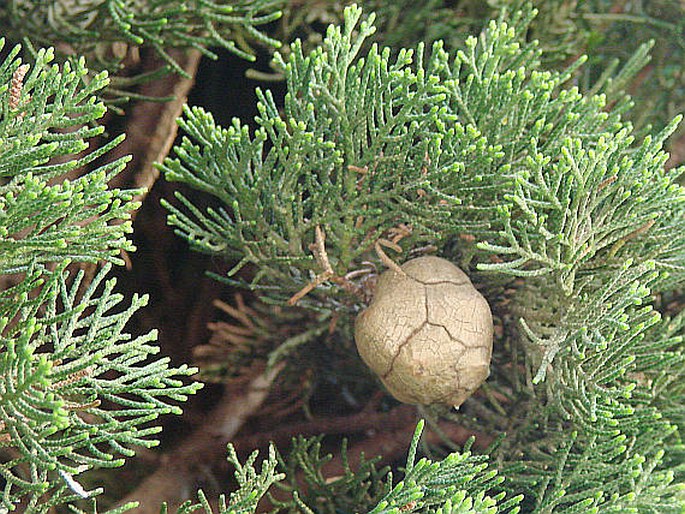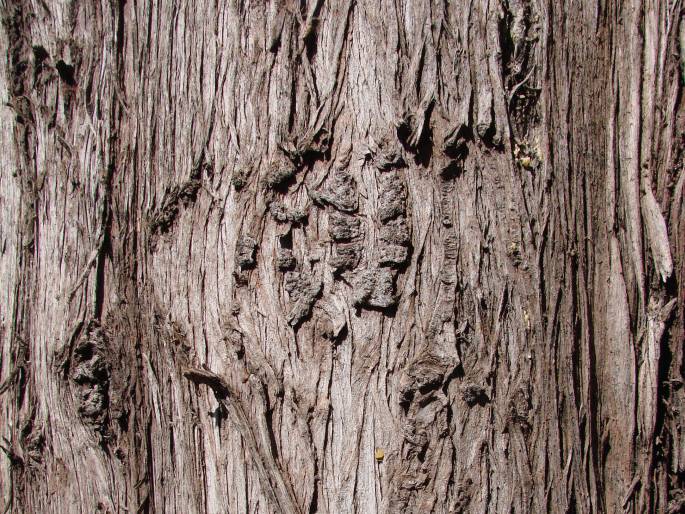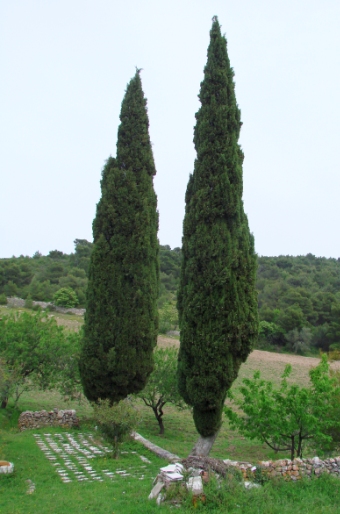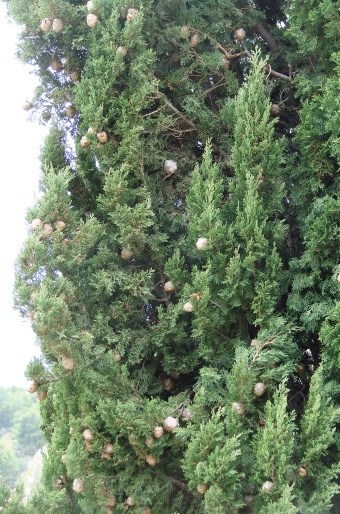Family: Cupressaceae Bartl.


Distribution: An Mediterranean species. The Italian Cypress is probably only native to the eastern Mediterranean region through to Syria and Iran. Since of ancient times has been planted in the whole Mediterranean.
Ecology: Fragments of native cypress forests are preserved on the islands in the Aegean Sea, they are located at an altitude of 800 to 1500 m above sea level. Elsewhere we meet with Cypress mainly around human settlements, cemeteries, the olive groves, along the roads, etc.
Description: An evergreen tree up to 35 m high. The trunk is straight, the bark is grey-brown, shallow tissures and twisted, scaly ridges. The crown is a narrowly columnar with upright branches. The leaves are scale-like, paired in 4-ranks, 0.5–1 mm, blunt, dark green, hairless. The male and female cones on same tree, the cones are solitary, 2.5–4 cm, globular, reddish brown to yellowish grey.
Use: The cypress wood is hard and impervious to rot, it was used by ancient peoples for carving and construction. The cones are used in traditional medicine. In ancient symbolism was associated with death, so it is often planted in cemeteries of the Mediterranean, but also appears as a decorative tree for houses and gardens, especially the columnar cultivar ‘Stricta’.



These images were taken in Italy, Gargano, Mattinata and Peschici (April 18 and 20, 2008).


